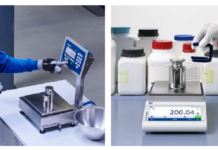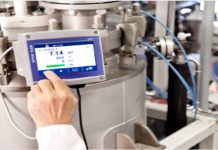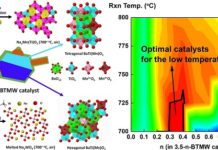A novel optimization methodology developed by Prof. Prakash C. Ghosh and Nadiya Philip, a Prime Minister’s Research Fellow (PMRF), from the Department of Energy Science and Engineering, Indian Institute of Technology Bombay (IIT Bombay), can recommend the ideal weight and size distribution for the components of a fuel cell electric vehicle, increasing their efficiency and helping expedite commercialisation.
Electric vehicles have gained massive popularity recently and are seen as the future of green mobility and a cleaner alternative to fossil fuels. An electric vehicle can be of two types – battery electric vehicles (BEVs) or fuel cell electric vehicles (FCEVs), apart from hybrid vehicles that use a combination of any two types of engines.
While a BEV uses batteries that need to be charged, FCEV uses fuel cells to power the vehicle. Fuel cells are electrochemical cells that use chemical energy to produce electricity. Hydrogen fuel cells are preferred in vehicles, and they combine stored hydrogen and oxygen from the atmosphere to produce energy.
FCEVs are often referred to as zero-emission vehicles, because the only byproduct from the engine is water vapour. And unlike BEVs, FCEVs do not need to be charged but refilled with hydrogen, much like filling fuel in a vehicle powered by an internal combustion engine.
FCEVs, however, are not without drawbacks. One of the downsides is the excess heat generated by a fuel cell. Because of the poor energy conversion of fuel cells, it produces as much heat as its power output. The excess accumulated heat reduces the performance of the vehicle and can even endanger the vehicle and its hydrogen storage tanks. This necessitates the use of massive radiators to cool the fuel cells which increases the weight and size of the vehicle.
Prof. Ghosh and Nadiya Philip from IIT Bombay have proposed a new thermal management system comprising a compact radiator and a thermal energy storage (TES) unit to address the issue of ‘oversized radiators’. The team has also developed a generic methodology for recommending the ideal sizes for the radiator and TES unit for optimal performance.
Nadiya said, “The use of TES provides two main advantages: one, it stores some quantity of the thermal energy generated by the fuel cell stack, thus allowing a reduction in radiator size, and two, it maintains a constant temperature for the coolant (used to cool the fuel cell) entering back into the fuel cell. Additionally, the thermal energy stored in the TES system can be utilised for different applications like cold startup, cabin heating, or preheating reactant gases (hydrogen and oxygen) for use in fuel cells”.
Earlier studies by the same group have also found that by using paraffin wax as phase change material (PCM), similar to the material used in cold packs, the minimum required radiator area in light-duty vehicles like cars can be reduced drastically. So far, manufacturers of FCEVs have not considered the usage of a TES unit to reduce the size of their cooling systems.
Most FCEVs use an electrical energy storage (EES) system, which includes batteries or supercapacitors to store some of the energy generated by the fuel cell to complement that from the fuel cell alone.
The IIT Bombay study is the first to consider the combined use of EES and TES to calculate the ideal sizes of each component, namely, the radiator, fuel cell, EES, and TES systems. The team used a mathematical technique called pinch analysis to determine the ideal sizes for these components.
“Pinch Analysis is an algebraic optimisation technique that aims to meet the demands with minimum resources. Two pinch analysis optimizations have been used in the current study, (one) to size the power sources (fuel cell and battery) and (other) to size the thermal management system components (radiator and PCM),” explained Nadiya. The study integrates the components, fitting them together like puzzle pieces to create optimal energy storage and cooling systems.
As reported by rnd.iitb.ac.in, the researchers have estimated that the proposed method can allow a reduction of the radiator size in heavy-duty vehicles like trucks by almost 2.5 times lower than normal by simply optimising the sizes of the parts. This method can potentially direct how to optimally integrate different energy sources and thermal systems in fuel cell vehicles based on the manufacturer’s preferences.
“Our next step would be a lab-scale experiment to study the effectiveness of the proposed thermal management system. Simultaneously the methodology will be tested with different drive cycles (different driving conditions) of longer durations, for a wide variety of operating conditions. Following this, we aim for real-time testing in vehicles,” concluded Nadiya.































